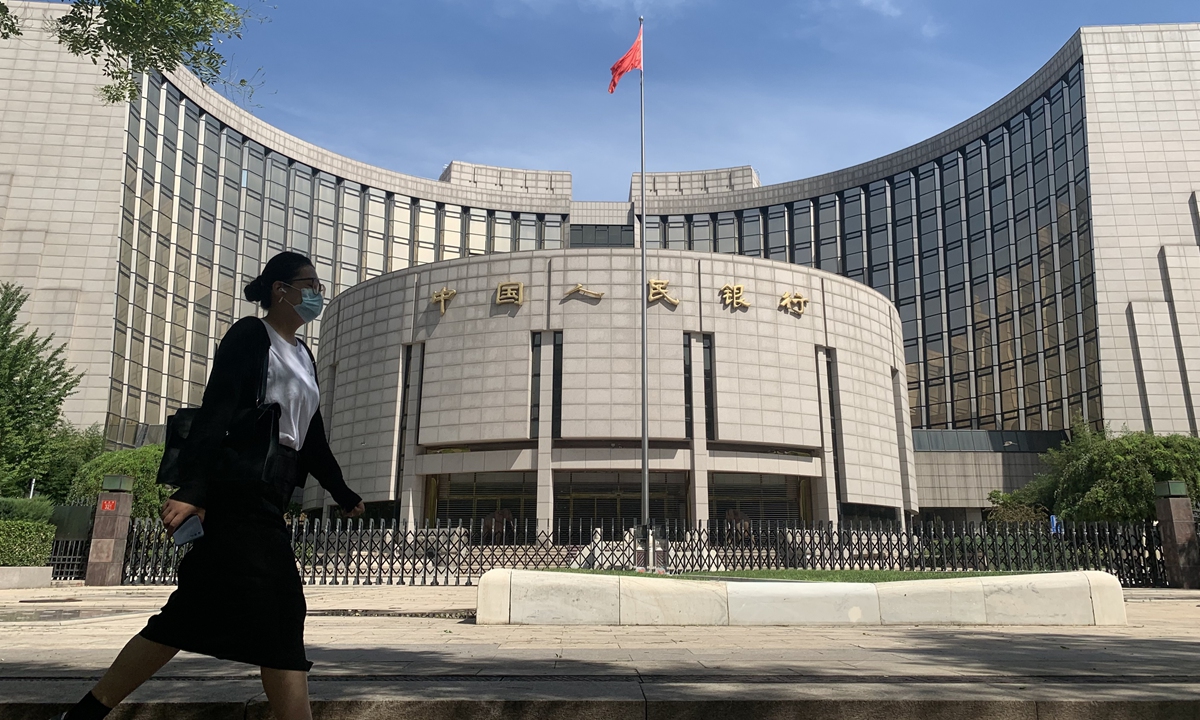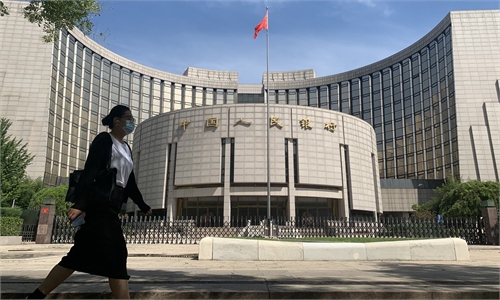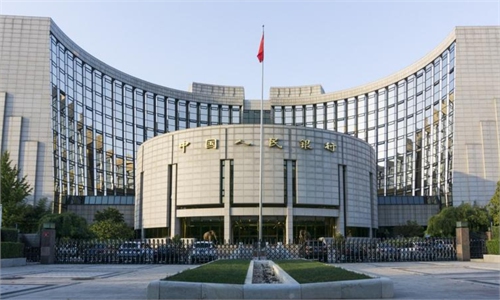China’s economy shows upbeat signs of full recovery with foundation for long-term development: PBC

A view of the PBC building in Beijing Photo: VCG
China's economy saw relatively steady growth in the first quarter of 2023 as multiple indicators rebounded, the People's Bank of China (PBC), the central bank, said on Monday in its quarterly report, adding that supportive monetary policy accelerated the full and continuous recovery.
The central bank pointed out that the economy will see a continuous and full recovery, and the growth rate will show an obvious increase in the second quarter as the comparison base was relatively low in the same period in 2022.
It also said that there is no basis for long-term deflation or inflation as commodity prices keep increasing moderately. It's expected that the consumer price index (CPI) may rise mildly in the latter half of 2023 and may rebound to near the average level in recent years by the end of the year.
In the first quarter, China's GDP expanded 4.5 percent year-on-year to about 28.5 trillion yuan ($4.17 trillion). The CPI rose 0.1 percent in April year-on-year, the slowest since early 2021, while on a month-on-month basis, prices declined by 0.1 percent.
Cong Yi, a professor at the Tianjin University of Finance and Economics, told the Global Times on Monday that the general recovery pace in the period has met expectations, indicating mild but steady growth.
"The driving force for China's economic recovery will mainly come from the real economy in the latter part of 2023, which will also carry out the growth of relevant infrastructure construction and generate market confidence as more supportive policies take effect," said Cong.
The PBC stated that China's economy has fully resumed normal operation with growth going beyond expectations and market demand recovered, as well as multiple advantages for its long-term development including a large market scale, sophisticated industry chains and abundant human resources.
In order to support the recovery of the economy at the beginning of 2023, the PBC reduced banks' reserve requirement ratio by 0.25 percentage points on March 17 to increase liquidity. It also urged lenders to lower the general financing cost.
The PBC also took measures to stabilize the yuan's exchange rate, and conducted structural supportive policies and risk prevention mechanisms to secure the normal operation of the economy, said the report.
Zhou Maohua, an economist at Everbright Bank, told the Global Times on Monday that the central bank will maintain a steady and slightly loose monetary policy, guide financial institutions to enhance support for weak points in the real economy such as small and micro-sized enterprises, and key emerging areas such as manufacturing, to promote the economic recovery and stabilize market expectations.
In the first quarter, monetary policy contributed to the 10.6 trillion yuan worth of new loans, an increase of 2.27 trillion yuan year-on-year. The balance of medium- and long-term loans for small and medium-sized enterprises increased by 26 percent year-on-year.
The balance of medium- and long-term loans for manufacturing rose by 41.2 percent year-on-year, said the PBC.
Zhou refuted some Western media outlets' claims that the momentum of China's economic recovery is cooling, citing recent indicators including the CPI and credit data.
"Although some indicators might reflect a slower rebound in parts of the economy, the overall trend of a domestic recovery in a robust and sustained way has not changed," Zhou stressed.



